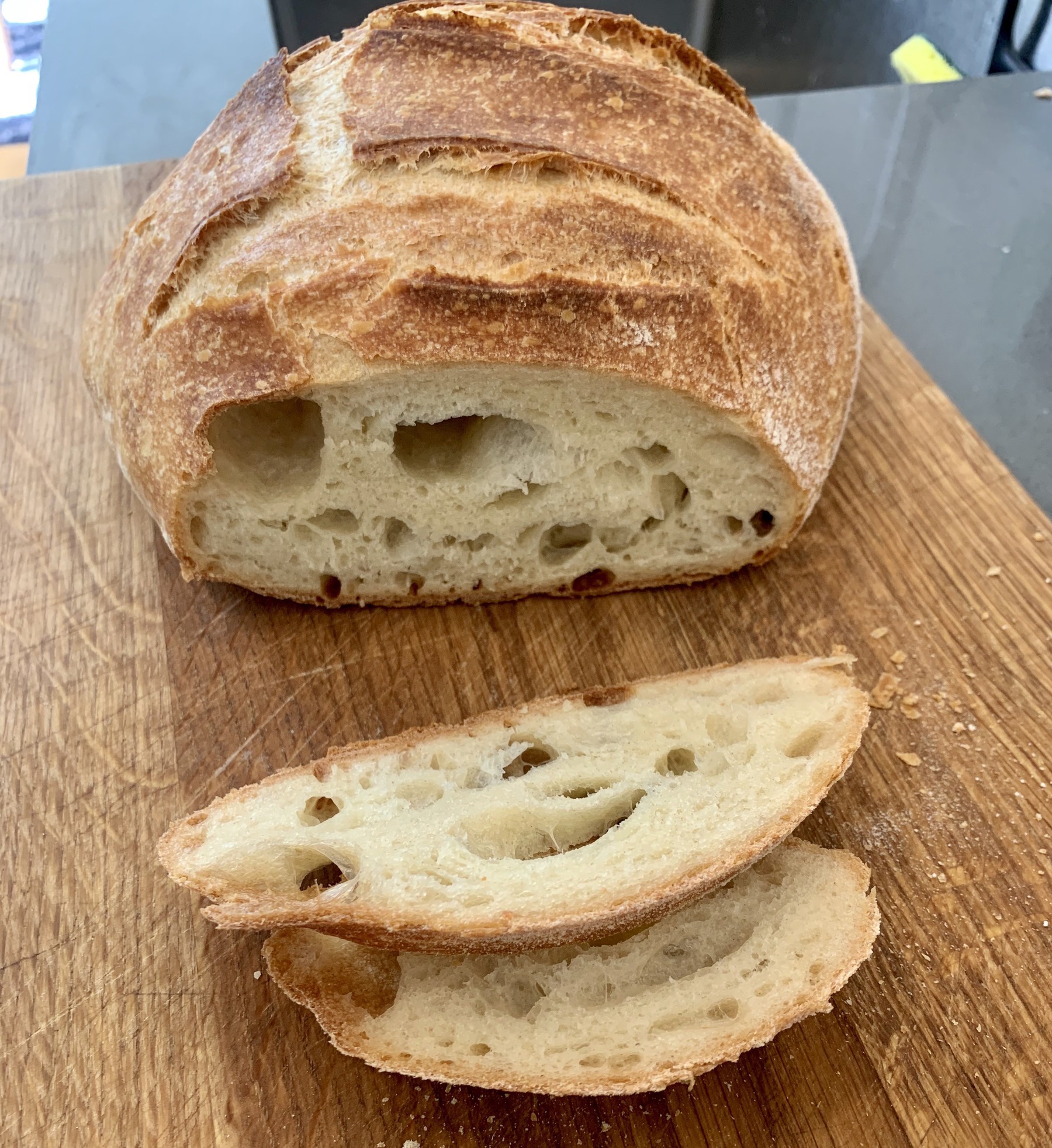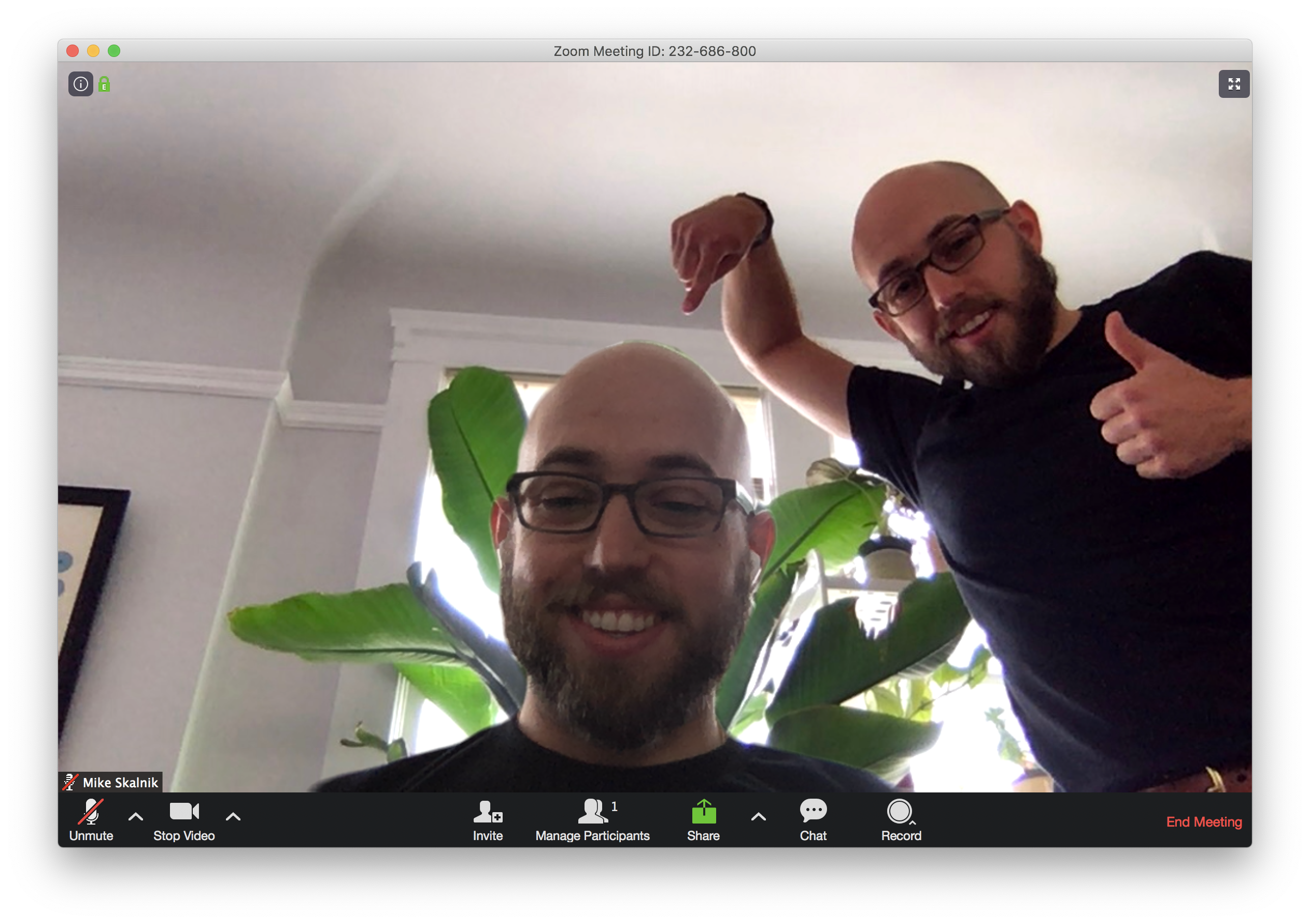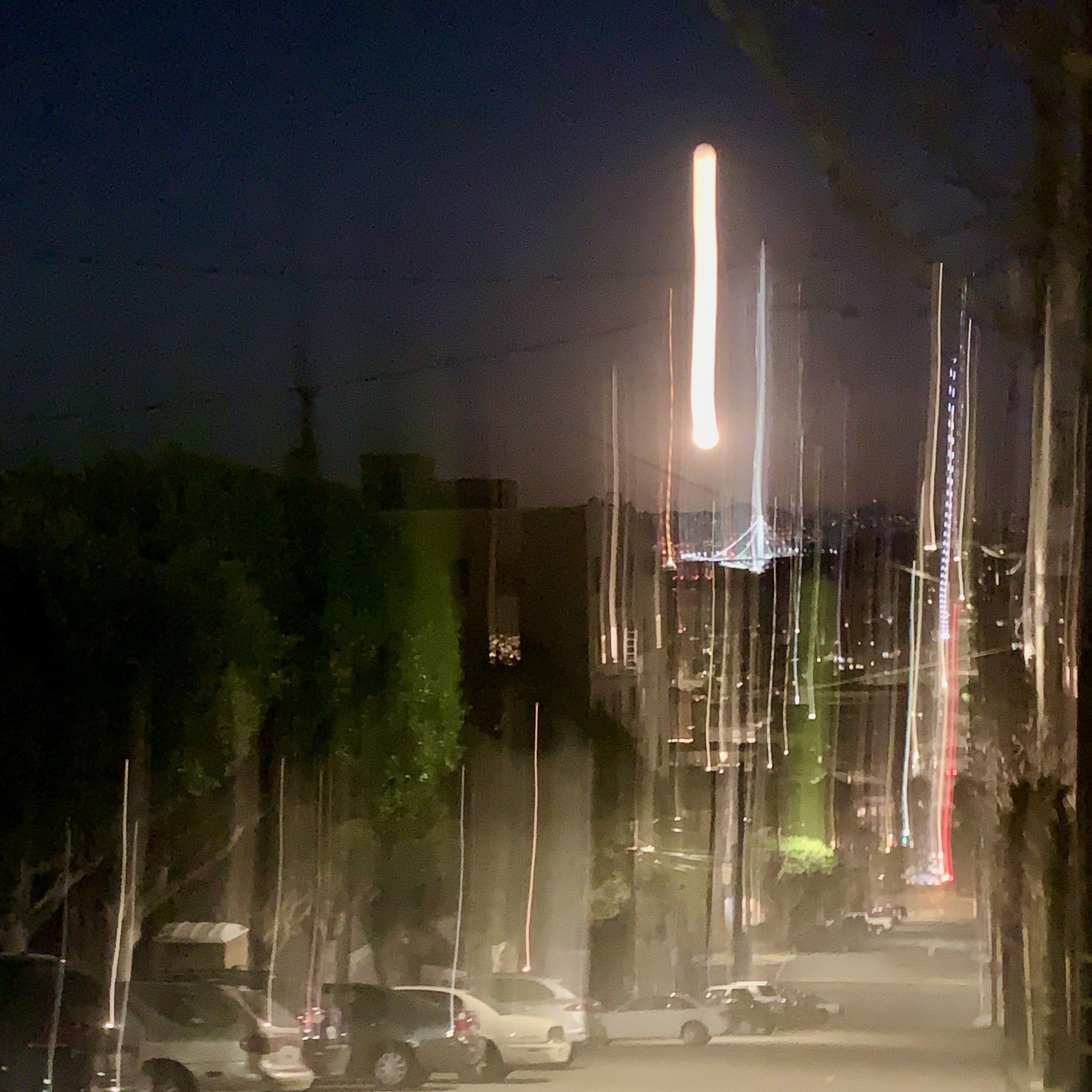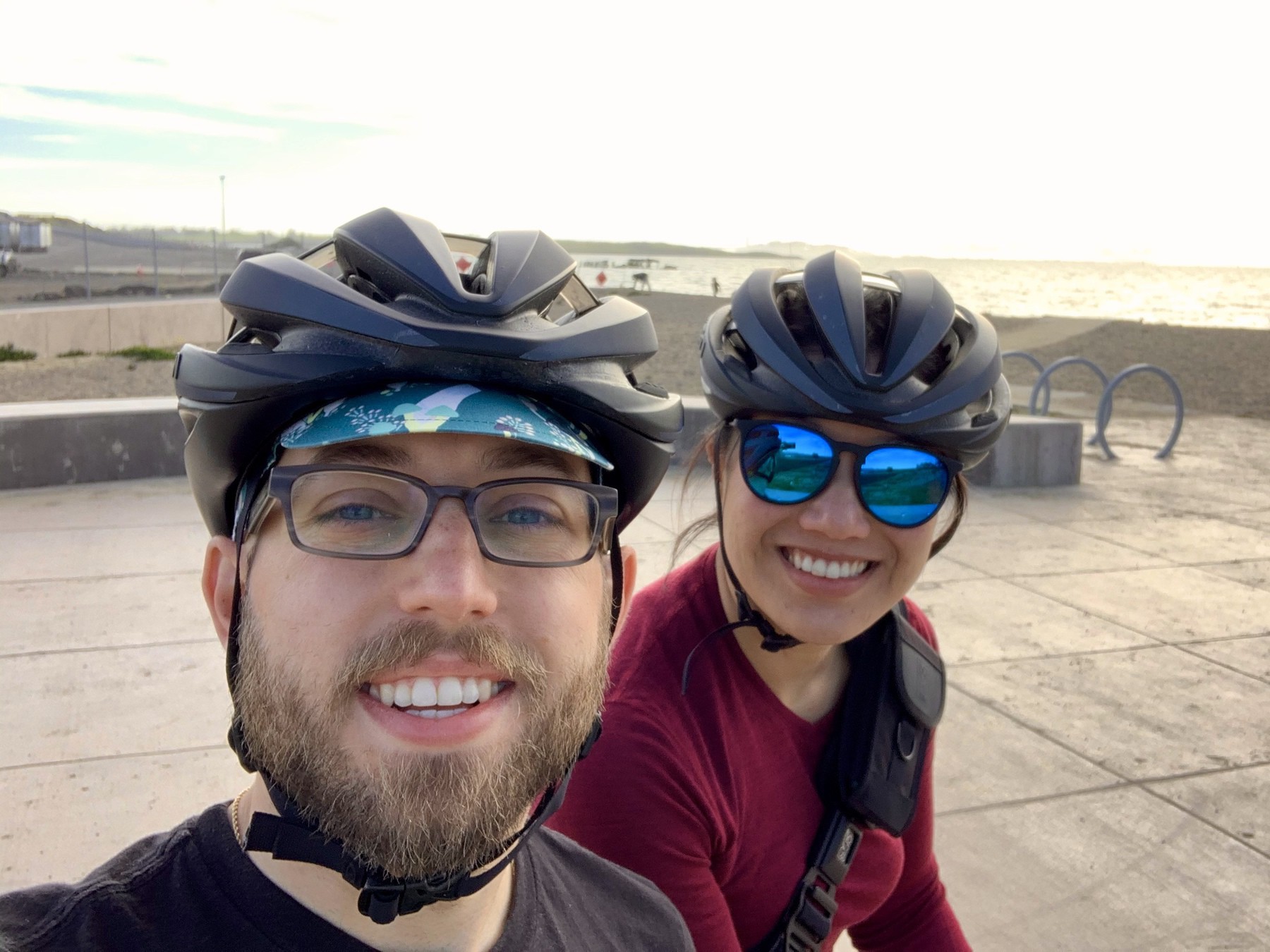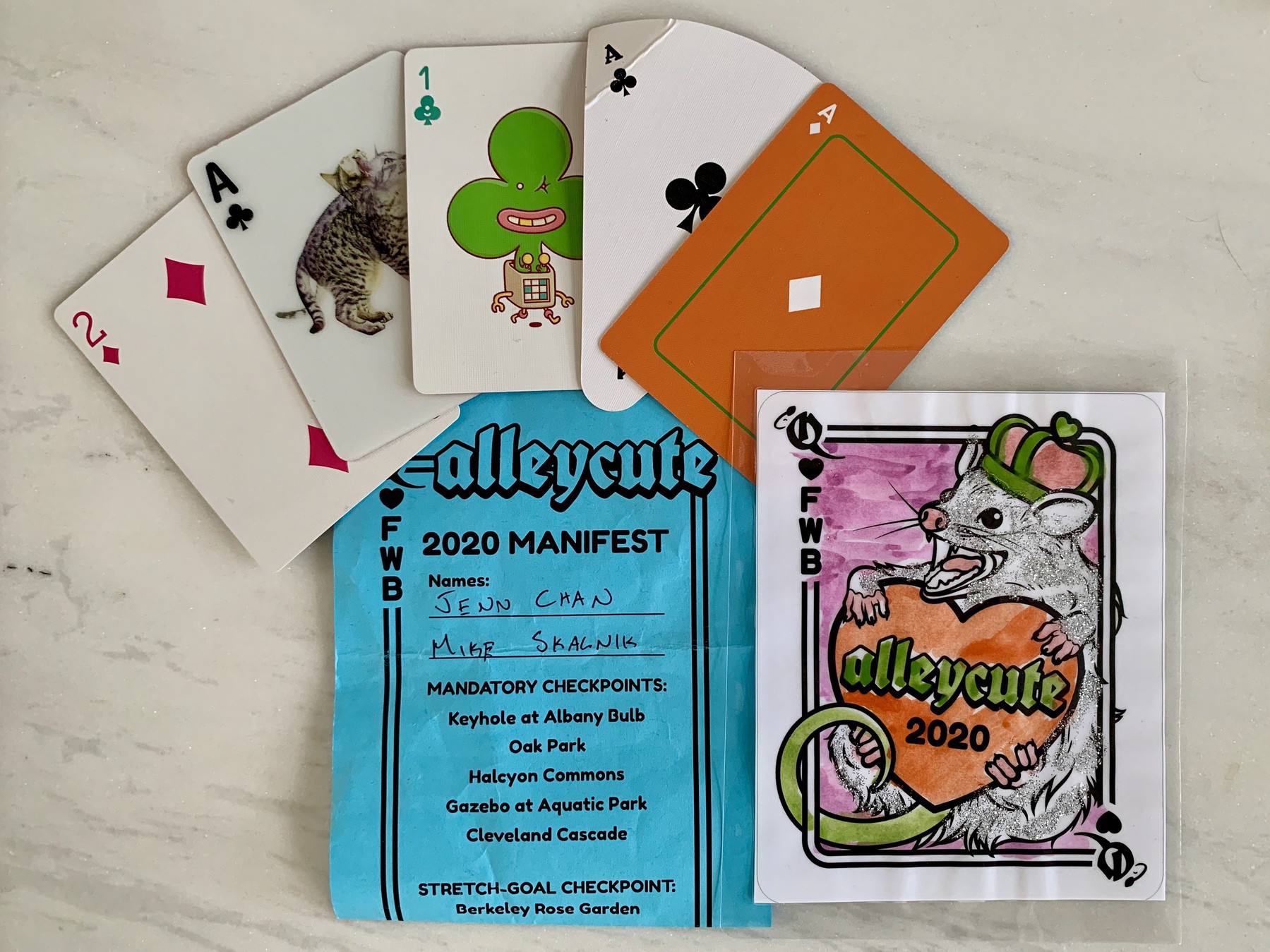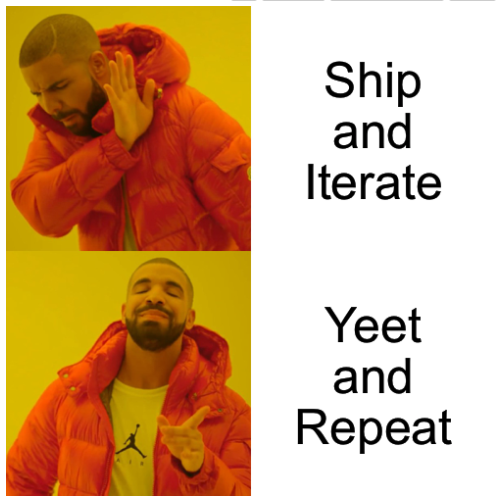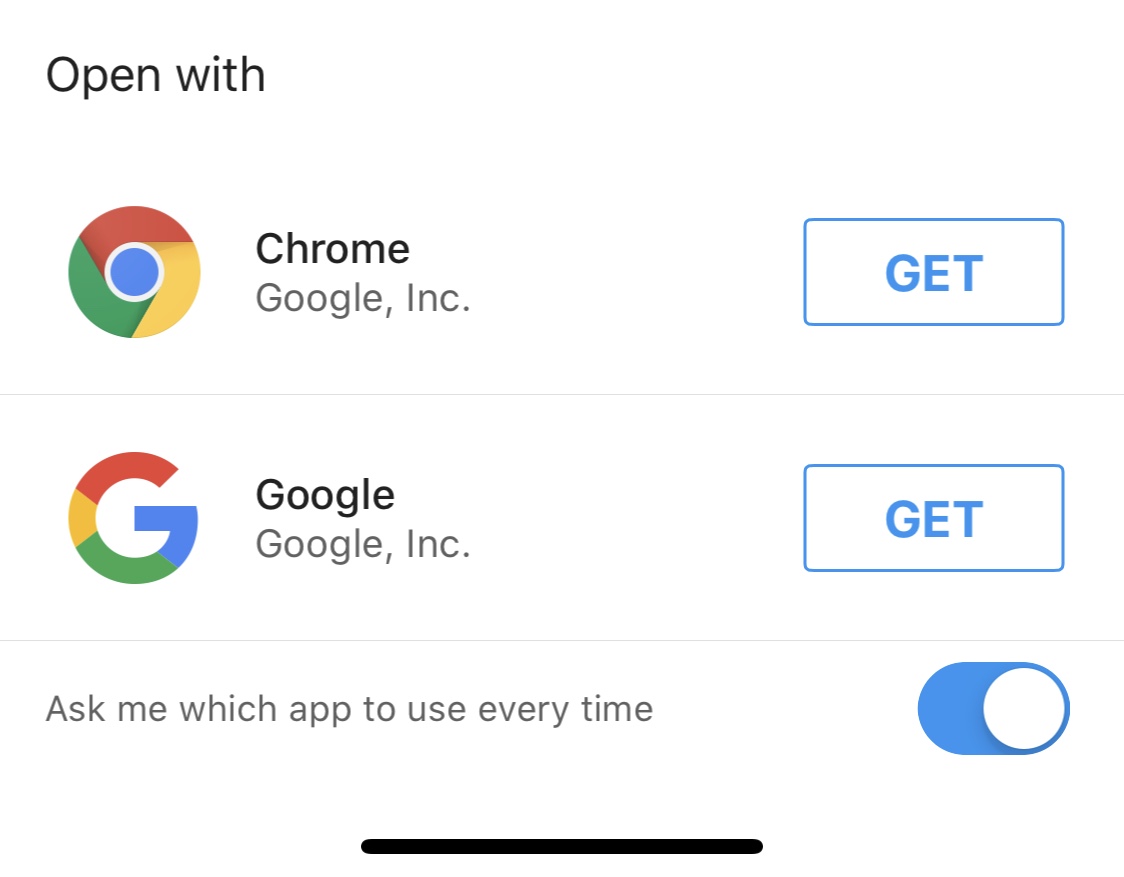My Annotated Highlights from Because Internet 📚
After reading Word by Word: The Secret Life of Dictionaries by Kory Stamper, I’ve been more interested in language. Because Internet by Gretchen McCulloch had been recommended to me from various sources and I was happy finally read it. Here are things that stuck out to me as I read it and a bit of why I highlighted them or what sticks out to me about them now, re-reading them.
We truncate words without regard for spelling: you can say the first syllable of “usual” or “casual” and everyone knows what you mean, but do you write it “yooj”? “uzh”? “cazh”? “casj”? It’s simply not clear, but speech proceeds merrily along anyway.
I’ve regularly thought of the differences between written and spoken languages and how they almost feel like two separate languages at times. This example really shows how vast that gap can be and how both parts of a language almost completely ignore each other.
…and by similarly specious reasoning objected to infinite splitting and “they” as singular, despite centuries of prior English usage. The same Latin-worshipping tradition was responsible for adding superfluous silent letters to words like “dete”, “samoun,” and “iland,” because “debt,” “salmon,” and “island” look more like Latin “debitum,” “salmonem,” and “insula.” Nevermind that “island” doesn’t even come from Latin, or that generations of schoolchildren would now have to go to extra effort.
This made me so upset. I know language is arbitrary and a thing we all agree upon but this level of arbitrary made me quite angry
British English has traditionally used both -ise and -ize spellings. But spellchecks have tried to prevent people from spelling the same word differently within the same document by enforcing “organise” and “realise” all the time when set to British English, leading to an upswing in -ise endings among the general British typing public and the perception that -ize is only for Americans.
I love this bit of trivia quite a bit. I’ve definitely seen this thinking that -ize is only for Americans and to see that it’s likely caused by the adoption of autocorrect is just mindblowing 🤯
You wouldn’t say that some birds aren’t singing right just because they’re lower in the (ahem) pecking order. No more are certain ways of speaking inherently inferior.
I love a good pun and I absolutely love this analogy for not criticizing how people speak/write as long as you can understand them. Just the fact that we can communicate such a vast amount of things to each other at all is magical.
But for the internet users who joined in order to hang out with people they already knew, screen names were a way of performing identity, rather than obscuring it: your username might honor a favorite band or movie quote, and could change a few months later as your pop cultural allegiances shifted. Your friends knew it was you the whole time, but if other people lost track of your shifting names, so much the better. It wasn’t so much of a stretch to start using your real name on Facebook, when your online and offline selves had been effectively linked within the minds of your primary social network for years. In fact, it could be felt to be a sign of maturity that you weren’t performing your identity through your username anymore (albeit a kind of “maturity” that involved posting photos of people drinking warm beer out of red plastic cups).
It’s strange. I straddled some of the cohorts that are laid out in this book, and this one really drove that point home. I used to use a regular username that wasn’t my name, and eventually shifted into using my last name as a handle in most places, which shows how I’m in this middle ground between Old Internet and Full Internet. For posterity, I summarized the cohorts outlined:
- First Wave
- Old Internet People
- Went online before most of their friends, thus primarily interacting with strangers
- Usenet, IRC, BBSes, MUDs, listservs, and forums
- High level of average technological skill
- Usernames were random but consistent
- Old Internet People
- Second Wave
- Full Internet
- Joined an internet that already established many communicative norms
- AIM, MSN, ICQ, GeoCities, Angelfire, Xanga, Neopets, LiveJournal, and MySpace
- This quote is a Full Internet person. Usernames stop being consistent, and real name isn’t a big leap since you generally interact with people you know.
- Semi Internet
- Came online the same time as Full Internet people, but primarily for work instead of socializing
- “Semi” because they didn’t fully commit to internet social life
- Often highly skilled at a few things they’ve been using for a long time like Photoshop or Microsoft Office.
- Wouldn’t describe themselves as a “computer person” but likely to be able to provide technical support to older family and friends
- Full Internet
- Third Wave
- Pre Internet
- People who were around for the previous waves, but didn’t adopt it until later
- Don’t know of an internet without Facebook and YouTube and wifi and touchscreens
- Post Internet
- Youngest cohort, joining the internet after all of those things were established
- Influenced by the internet, even if they’re not on it
- Next 5 quotes are about Post Internet cohort
- Pre Internet
Just like the teens who whiled away hours in mall food courts or on landline telephones became adults who spent entirely reasonably amounts of times in malls and on phone calls, the amount of time that current teens spend on social media or their phones is not necessarily a harbinger of what they or we are all going to be doing in a decade.
This talks about how so many people look at the Post Internet cohort to try to figure out what’s next, but really we should realize they’re just using the tools given to them to do the same things we’ve always done as teens.
By joining the social Internet after their parents were already there, they faced an especially dire version of “context collapse.” This is danah boyd’s term for when people from all your overlapping friend groups see all your shared posts from different aspects of your life.
I haven’t heard of “context collapse” but it’s definitely something I’ve understood, both digitally and in the physical world. I see my friend groups collide from time to time now, which terrified me more as a child than it does now as an adult when I’ve found a more conclusive identity and wasn’t presenting a different self to every group.
Including “lol” indicates there’s a second layer of meaning to be found, telling the recipient to look beyond the literal words you’re saying. The exact nature of that second layer depends on the meaning of the first: it’s reassuring when your statement might otherwise be perceived as rude, sarcastic, or confrontational, but “I love you” is already maximally warm and fuzzy, so if you add a second layer of meaning to it, things can only get worse.
While Gretchen McCullouch discusses these internet cohorts, she weaves this thread of the evolution of “lol” in it and I found it incredibly interesting. Starting from all caps and indicating actual laughter to it’s current form, where no one actually laughs, but it does indicate something. This definition given is very good and something I’ve inately understood and accepted, but couldn’t have described before reading Because Internet.
Social and technologically savvy online were virtually the same for Old Internet People and still loosely linked for Full and Semi Internet People, but they’ve become completely decoupled for the Post cohort. This defies predictions that digital natives would pick up technological skills as easily as speaking.
I definitely saw this growing up with the internet. My parents thought it was a problem that I was on the computer so often, but they could see I was picking up some kind of skills that were likely valuable. When my younger family members got online, there was a similar assumption and comparisons to me drawn. And while they definitely picked up some skills where it overlapped with their interests, it definitely fell short of what I was required to pick up to achieve my goals.
Who is the imaginary authority in your head when you choose how to punctuate a text message? Is it the prescriptive norm of an offline authority, like your former English teacher or a dictionary? Or is it the collective wisdom of your online peers, the anticipation of their emotional reaction to your typographical tone of voice? The difference between how people communicate in the internet era boils down to a fundamental question of attitude: Is your informal writing oriented towards the set of norms belong to the online world or the offline one?
It’s pretty great to live during a time when language is shifting so rapidly. It’s wonderful to watch, experience, and participate in.
Even in more formal genres online, such as news articles, paragraphs have gotten shorter and are separated by a blank line rather than a space-saving indent as they are on paper.
It makes sense that as we experience more and more informal text, we begin to favor those similar styles in more formal text. I also wonder if this is a data point people look at when
The internet made our personal punctuation preferences public, and brought with it a different set of priorities: writing needs to be intuitive, easy to create, and practically as fast as thinking or speaking.
Making writing more intuitive is such a great and noble goal. It reminds me of Noah Webster’s various changes in spelling for American English to make it more intuitive.
One study looked at the most commonly lengthened words on Twitter and found that they still tend to be sentiment words. The top twenty most lengthened words are a cornucopia of emotions: nice, ugh, lmao, lmfao, ah, love, crazy, yeah, sheesh, damn, shit, really, oh, yay, wow, good, ow, mad, hey, and please. Several studies have found that this expressive lengthening, as linguist Tyler Schnoebelen named it, is sensitive to social context: people lengths more in private texts or chats than in public posts.
Woooowwwwww
Just like offline power relationships, the more Wikipedia administrators and those with a high “karma” rating on Stack Exchange tended to be less polite than regular users.
While unsurprising, this made me a bit sad. I’m always a bit more idealistic and hopeful that people can grow above this, but I suppose we’re only human.
This change is well under way: a 2006 study by Carol Waseleski found that in emails, exclamation marks were infrequently used to indicate excitement, occurring only 9.5 percent of the time with either strong language, like “These damn programs are out of touch with reality!” Or effuse thanks, like “Thank you so much for your comments–they are very, very helpful and the list of resources is wonderful!” In comparison, exclamation marks indicating friendliness 32 percent of the time (“See you there!” “I hope this helps!") and emphases statements of fact another 29.5 percent of the time (“There’s still time to register!")
One of the fun things as I read about language is noticing things I hadn’t noticed before. I’ve definitely felt this shift in exclaimation point use, and even changed myself, but I never really noticed it until it’s called out like this. I’m now very aware of my own exclamation point use in written communication.
The typo !!!!1!11! Was then parodied by writing out “one” and “eleven” as full words: !!!!one!!eleventy!! Leet speak and multiple exclamation marks were genuine indicators of computer proficiency and excitement, respectively, in the newspeak of the 1980s and 90s but both gradually became ironic through continued use.
In the plain text of the late 1990s and early 200s instant messenger status messages, sparkly punctuation would range from ~just one~ of each all the way up to
;********so many sparklesoralternating~; mixed with wOrDs iN mIxEd cAPiTaLiZaTiOn, e x t r a s p a c e s, and ✧•º:✩✧•º:★ extra star symbols ✧•º:✩✧•º:★. With advances in technology, people also made the text multicolored, uʍop ǝpᴉsdn, or used emoji, built in fonts ⓔⓝⓒⓛⓞⓢⓔⓓ ⓛⓔⓣⓣⓔⓡⓢ, or ø𝐁ຣʗ𝑣rℛ𝑒 ડ𝐘ℳ♭ᴏ𝓁𝘀 for aesthetic effect.in combination
People love to hate on emoji, but I rarely hear criticism of things like this. I find a misuse of Unicode characters like this to be a bit more frustrating, but I cannot argue with the fuckin’ radical aesthetic effect.
In spoken Japanese, for example, people associate lengthening at the end of a word or phrase with a sounding cute or playful. But in written Japanese, each symbol stands for a syllable rather than an individual sound the way a letter does. And people generally aren’t trying to indicate that the whole syllable is being repeated. So while English writers lengthen by repeating a letter, writers of Japanese add a different symbol entirely: the wave dash 〜 (or the slightly narrower tilde ~, depending on what the keyboard supports). The Japanese word for “yes” is written はい and pronounced “hai.” If you want to write the equivalent of “yesss” or “haiii” using tilde lengthening, you’d write “yes~~,” “hai~~,” or “はい〜〜.”
I knew of some times to Japanese for the cutesy tilde use, but seeing the actual reasoning behind it is super neat! This is really cool.
But since English already had a way of indicating length, the lengthening tilde became associated in English with bilingualism in one of these languages, being a fan of Japanese cultural exports like anime or manga, or even just the secondary association with cute sparkles and ignoring length altogether.
I think it’s true there’s some ties to being a fan of Japanese cultural exports, but I stopped seeing that so much with the cutesy tilde. I think it has outgrown that association now and just become yet another tool in the toolbox of informal linguistic expression.
Some ironic indicators that play around with typographical signals of authority predated the Internet, like “scare quotes” and Satirical Brand Names and Legalese™. Ironic Capitals may be Very Old Indeed, such as this 1926 quote from Winnie-the-Pooh.
“Thank you, Pooh” answered Eeyore.” “You’re a real fiend,” said he. “Not like Some,” he said.
Dang Eeyore, throw that shade. I love seeing such old uses of these use of type to express voice!
In 2003, a user defined the symbol . as “ends a fucking sentence.” But in 2009, another user defined it as: “the cool way to emphasize (usually moody-ass) sarcasm.” We can see how disdain maps onto popularity: in 2003, the disdain is for the reader, for looking up a punctuation mark with no slang meaning, while in 2009, the disdain has shifted to the user of the slang.
It’s fun how such a small character can change the mood of a sentence. The passive aggressive period is amazing, and seeing it evolve in such a short amount of time is impressive.
The posters onto the 2010 LiveJournal thread consistently describe it as “a sarcastic sing-songy voice.” I share this intuition but “sing-song” is not exactly a terminology of proper linguistics. So I tried to pin it down more specifically, and nearly fell off my chair in excitement when it dawned on me: when you say a word like “sooooo” with a sing-song sarcastic inflection, the picture of your voice literally rises, then falls, then rises slightly again. In other words, your intonation makes the shape of a tilde.
I wasn’t really aware of the sarcastic tilde much, but I love this idea of it resembling a sing-song inflection.
A predictive keyboard automatically adds capitals at the beginning of messages and after a period, and it only predicts words in its dictionary. Suddenly, instead of lowercasing taking less effort, it often took more.
While the idea of technological changes in how we communicate leads to new ways of expressing oneself and aesthetic preference is an old one, this example is fun to see.
Glitchy, pixelated, and badly photoshopped internet art came into popularity in an age of high-definition cameras and smooth Instagram filters, and so did the writing equivalent: stylized verbal incoherence mirroring emotional incoherence.
I love the analogy of deep fried memes and funny manipulated speech a la lolcats and jomny sun.
IBM experimented with adding Urban Dictionary data to its artificial intelligence system Watson, only to scrub it all out again when the computer started swearing at them.
What else did they expect? Swearing would be the LEAST of my concerns of having Watson parse all of Urban Dictionary. I figured swearing would at least be a goal with this.
It’s not that writing has completely changed, it’s that writing has forked, into formal and informal versions. But this forking didn’t coincide with the invention of the internet, or even the computer. All the caps, expressive lengtheninggg, ~irony punctuation~, minimalist punctuation and capitalization paired with line breaks all have direct ancestors in the early twentieth century, not the twenty-first.
I think this is so often overlooked by people who love to critique written communication. Informal communication doesn’t need to adhere to the strict rules of formal writing and is better because of that.
When we learn to write in ways that communicate our tone of voice, not just our master of rules, we learn to see writing not as a way of asserting our intellectual superiority, but as a way of listening to each other better. We learn to write not for power, but for love.
I think this is a bit overstated, but I do greatly value writing for communication and being able to express my personal brand of bullshit as clearly as possibly in text.
Looking for a grand unified theory of emoji had been dooming me to failure because emoji doesn’t just have one function, they have a range of them. But crucially, it’s the same range that gestures have, and that’s why emoji caught on so quickly and so completely: because they gave us an easy way representing the functions behind the gestures that are so important for our informal communication.
It’s extremely accurate that emoji serve multiple purposes, but using them as a gestural emblem is why hands are some of the most common emojis.
If you try talking with your hands tied down (recruit a friend to make sure you get untied!), you’ll probably have a hard time with it. Researches have done this: they showed people cartoons of Wile E. Coyote chasing Road Runner and asked them to describe them to someone else. Half the time, the describers had their hands fastened to the chair, ostensibly to take physiological measurements, but really to see what happened when they weren’t able to gesture. The researchers found that when you can’t gesture, you have a harder time telling the visual and spatial parts of a story: people talked slower, paused more, and were more likely to say “um” and “uh.”
I just found this study and the outcome quite interesting.
People were bothered by variation in the form of the dancer emoji because it was serving as an emblem, and emblems add their own separate meaning to the words they go with. But people were unruffled by the variation in the form of the birthday cake emoji because it’s an illustration, and illustrative emoji instead highlight and reinforce a topic that’s already present. It’s okay if illustrators aren’t quite exactly on target: the surrounding words will provide enough context to interpret them correctly. For the emblem emoji, we tend to know exactly what we’re looking for because we’ve seen other people using it. For illustrative emoji, we often go browsing through our keyboards instead.
It’s nice to have the words to describe something you feel. These two uses of emoji, emblematic and illustrative, are nice categories to have on hand.
One use of emoji that’s explicitly beat-related comes when each word is followed by a clapping hands emoji, as in WHAT 👏 ARE 👏 YOU 👏 DOING 👏.
Repetition, along with beat related repetition, is such a natural use of emoji as gesture.
In practice, they tended to be conservative about making new pieces of type: the first English printers importer their presses from Continental Europe, where no one used the English letter þ (thorn), so English printers substituted either the “th” letter sequence (which won out in most places) or the similar-looking letter “y” (which survives in a few limited contexts like Ye Olde Tea Shoppe).
I had no idea about this piece of trivia about þ! How neat.
When researchers show East Asian and Western Caucasian people photos of faces displaying different emotions, the Asian participants tend to make conclusions about the emotions based on what people are doing with the eyes, whereas the Western participants look at their mouth to read emotions. This tendency is reflected in the different conventions for portraying emotions in manga and anime versus Western cartoons, and it shows up again in the stylized faces of emoticons and kaomoji. Happy :) and sad :( emoticons can have the same eyes but must have different mouths, where as happy ^_^ and sad T_T kaomoji can have the same mouths but must have different eyes.
I had no idea about this difference of how East Asian and western cultures tend to read emotion. It’s very interesting to see that reflected in both anime and Asian style vs Western style emoticons.
They found that people use the face with tears of joy emoji 😂 in kinds of sentences where they might otherwise have used lolol, lmao, lololol, lolz, lmfao, lol, ahahah, ahaha, lmaooo, or lolll; they use the heart emoji ❤️ in the same contexts as words like xoxoxox, xoxo, xoxoxoxoxo, xoxo, oxox, babycakes, muahhhh, mwah, babe, and love you; and they use the loudly crying emoji 😭 like they use ugh, ughhhhh, wahhhh, agh, omgg, omfg, and whyyy.
Emblematic emoji make so much sense to replace these emblematic uses of language, so I think this pairing of emoji and acronyms/words complete sense. But sometimes you need to study things that feel obvious to have a concrete data point.
I was reminded of this when watching a scene in the BBC television series Call the Midwife, set in the late 1950s and early 1960s, where a younger midwife greets and older one with a cheerful “Hello!” “When I was in training,” sniffs the older character, “we were always taught to say ‘good morning,’ ‘good afternoon,’ or ‘good evening.’ ‘Hello would not have been permitted.”
I had heard that “hello” was an invention for the telephone, but I had never thought about what preceded it as a greeting.
Chat is a format entirely of and for networked computers, predicted on the idea that you could have a real-time conversation between two of more connected screens.
Real time text chat really is a creation only allowed by connected screens. It’s interesting to think of it as a pure invention for computers. As someone who’s grown up with text chat the comparison to normal in person chat seems natural, but really the differences are numerous. Other digital communication, like email, voice calls, or even video calls, are have more natural mappings to non-digital communication.
But by the same token, chat has taken on the position that phone calls once had as the most probable way of reaching someone, which in turn means that we must be reachable there instead. (Although sometimes we don’t want to be: “butler lies” are the polite social fictions which we use to manage our availability in chat, like “Sorry, just got this” or “Gotta get back to work.")
I hadn’t heard of these called “butler lies” but now I can’t unsee them.
The idea of a third place is often invoked to explain the appeal of Starbucks: the first place is home, the second place is work, but people also need a third place to socialize that’s neither home nor work, like a coffeeshop. What Ray Oldenburg, the sociologist who coined the term in the 1989 book called The Great Good Place, had in mind was something more specific than just any convenient spot where you might stop by for a cup of Joe. Oldenburg’s third places are first of all social centers, distinguished by an emphasis on conversation and playfulness, regular attendees who set the tone for newcomers, the freedom to come and go as you please, a lack of formal membership requirements, and a warm, unpretentious feeling of home away from home. Examples include pubs, taverns, and bars, cafés and coffeeshops, barbershops, community centers, markets, malls, churches, libraries, parks, clubs and organizations, main streets, public squares, and neighborhood activities like block parties, town meetings, and bingo.
This notion of “the third place” came up recently before this. I was talking to a coworker about the benefits and problems with social spaces at work. I felt like it removed this essential third place, where as they felt like the third place was already missing in a lot of ways from modern American life and companies providing them was breathing new life into the idea and made people feel their necessity.
Oldenburg also points out how third places have been essential to forming the kinds of large, loose-knit social groups that are core of new social movements, such as the agora in Ancient Greek democracy, taverns around the American Revolution, and coffeeshops during the Age of Enlightenment, which parallels how Twitter was used for the Arab Spring or the Black Lives Matter protests.
This just makes me want to read The Great Good Place by Oldenburg even more.
In 2015, Reddit banned several of its subforms that had become strongly associated with hate speech. At the time, there was considered doubt that it would work: Would the hateful commenters simply invade other subreddits and continue their hateful ways? A study that came out in 2017 suggested they would not. At least on Reddit, users who moved to other communities on the same site reduced their hate speech by at least 80 percent. Other accounts simply became inactive, however, and may have moved to other sites where this behavior was still tolerated.
While I’ve regularly felt like this tactic works, I think it’s important to have it studied and known. This gives a lot of credence to the notion that banning this kind of garbage leads to less of it, and I hope will eventually empower platforms to not stand for hate speech.
As the then eighteen-year-old Brandon Epstein, founder of MIT Memes for Intellectual Beings and Spicy Memelords, put it, “We’re the ones that have been the most immersed in meme culture. When last year’s freshmen became freshmen, memes weren’t the cultural monolith they are now. Considering that memes really rose to mainstream prominence during the time when we were in high school, I think there’s a bigger focus on memes for people my age.”
Ok really I just highlighted because of THAT FRIGGEN TITLE.
To put it in more technological terms, language is humanity’s most spectacular open source project.
I like this idea. While it’s harder to see with some languages that have central authorities that dictate their use, like French, it’s an easy parallel to see with languages like English that are so free form.


